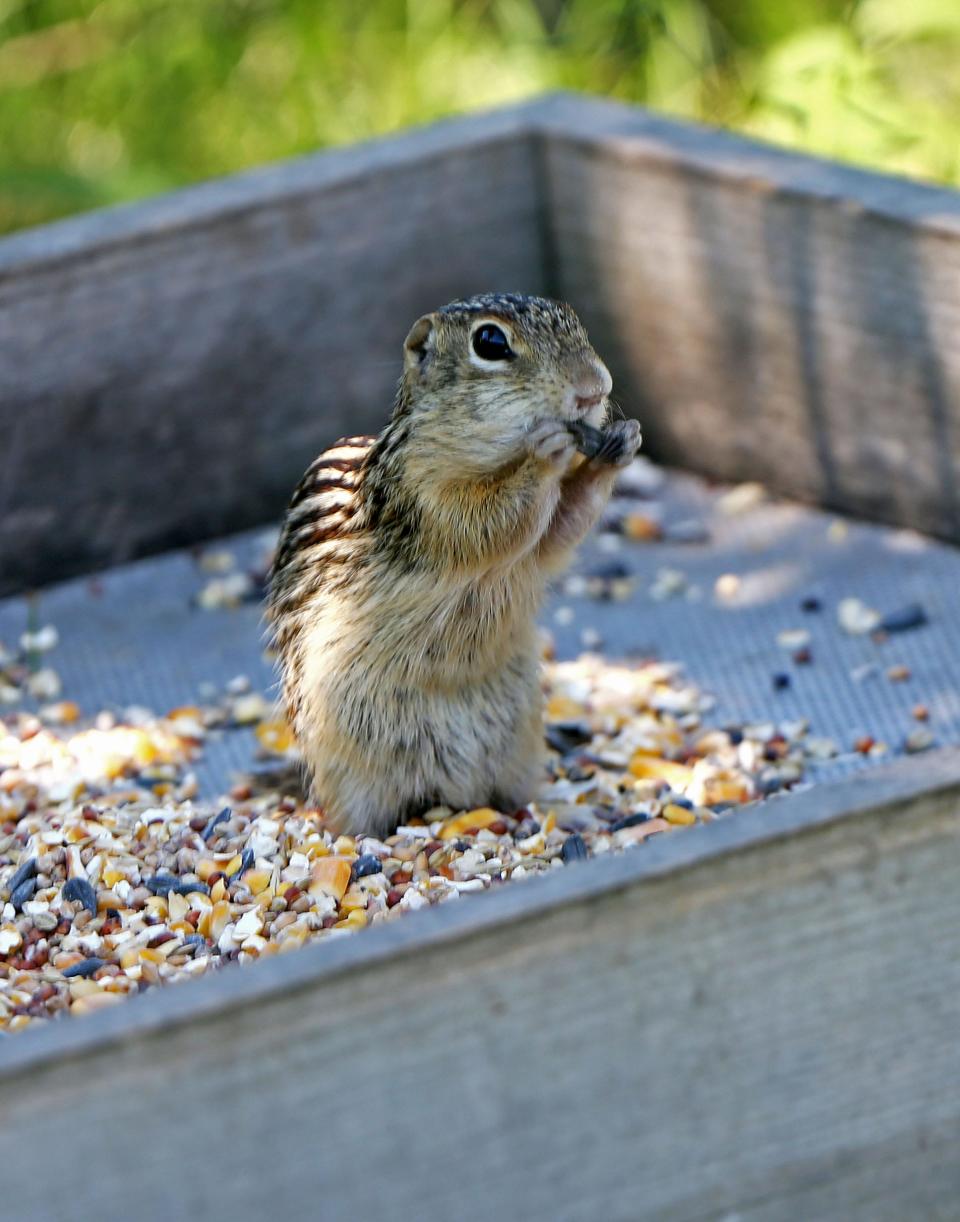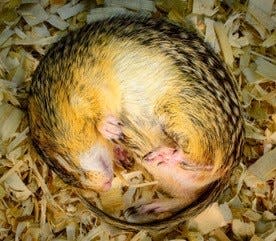Goetze: These tiny critters can delight. Ground squirrels live and hibernate here.
Ground squirrels are wary and shy animals, but it is possible to observe three different species in our Northcentral Texas and Southwestern Oklahoma region.
One species is more likely to be sighted because it occurs throughout the area. You must search for these small squirrels in the right places and at the right times. Otherwise, they are easily overlooked or are resting within their burrows.
However, the activities and antics of these alert and swift little Sciurids are sure to delight most observers.
Different patterns equal different squirrels
The most common ground squirrel of North Central Texas and Southwestern Oklahoma is the thirteen-lined ground squirrel. The distributions of the other species — the spotted ground squirrel and the Rio Grande ground squirrel — overlap that of the thirteen-lined ground squirrel in the south and west of our region.
All three squirrels are small and there is much overlap between their sizes. Their average body and tail lengths range from 4.5 to 7 inches and 2.5 to 5.25 inches, respectively. The spotted ground squirrel is the smallest, and the Rio Grande ground squirrel is the largest of the three species.
The easiest way to distinguish between these squirrels is by observing the different patterns of lines and spots that extend from their shoulders to the base of their tail.
The thirteen-lined ground squirrel has an alternating series —approximately 13 in number — of narrow, solid, whitish lines adjacent to broader, darker brown bands containing distinct white, square spots.
The slightly larger Rio Grande ground squirrel has nine or 10 rows of non-bordered, distinct, white, square spots; whereas, the spotted ground squirrel’s fur has a more cinnamon dorsal color and often very faint, indistinct rows of small white spots.
Additionally, the thirteen-lined ground squirrel and Rio Grande ground squirrel have bushy tails, but the spotted ground squirrel lacks a bushy tail. All three species have large, prominent eyes, well developed claws on their fore and hind feet, and internal cheek pouches enabling them to easily transport food materials.

Their ears are short and close to the skull, and their belly fur is usually lighter colored than their dorsal fur — which helps the squirrels blend into their shortgrass and/or sparsely vegetated habitats.
Sort of social
Ground squirrels are only semi-social but may still be found in small groups and loose-knit colonies. All three species prefer shortgrass prairie habitats and/or arid and barren lands and desert habitats.
Groundskeeping, regular mowing of parks, cemeteries, golf courses and roadsides, and other human modifications of habitats have benefitted ground squirrels and probably increased their population numbers and ranges because the squirrels have adapted well to these modifications.
Thirteen-lined ground squirrels originally were denizens of shortgrass prairie habitats; whereas Rio Grande ground squirrels and spotted ground squirrels may also be found in slightly rockier and drier localities. Ground squirrels prefer sandy or loamy, well-drained, alluvial soils rather than heavier clay and shallow, rocky soils.

Home, sweet home
All three species construct burrow systems and utilize a deeper nesting and hibernation burrow, as well as several shallow escape and refuge burrows. Nesting burrow entrances are plugged from the inside at night and may also have more than one entrance.
Ground squirrels are diurnal and most active during warm, sunny days. They are very vigilant and often stand upon their hind legs to obtain a better look at their surroundings. If danger is sensed or sighted, the squirrels may chirp a brief warning and then quickly scamper to the nearest burrow retreat.
I have noticed two squirrels retreating into the same burrow upon a few occasions and, usually, the last squirrel to dive down the burrow entrance is almost immediately expelled by the previous refugee!
The squirrels greet each other by approaching close and touching their noses and cheeks together, and they also mark territories by similarly rubbing upon objects and the ground within the vicinity of their burrows.
Deep-sleeping little ground squirrels
All three species have diets of grasses, flowers, seeds and various forbs, and diets are supplemented with insects during the spring and summer months. Small snakes, birds and birds’ eggs, other rodents, and even a minor amount of carrion are occasionally consumed.
All three species must gain weight and deposit significant amounts of body fat during their active months. Often they will almost double their spring emergence weights before undergoing extended periods of deep hibernation.
Hibernation may begin during later summer months and extend throughout fall and winter until the ground squirrels emerge by March or April. During hibernation, the ground squirrel’s heart rate, respiration and body temperature decline to a mere fraction of their normal, active rates.
The squirrels store some grasses and seeds within their burrows for consumption shortly after they arouse in early spring.
Depending upon location, these expert hibernators may remain inactive for more than half of the year before they emerge to eat, gain weight and mate during spring and summer.
Younger squirrels often begin hibernation at later dates and may remain active until September or October. A single litter, ranging from two to 12 young, is reared in spring and the youngsters quickly mature and become independent.
Hybrids do occur
At some localities where the thirteen-lined ground squirrel and the Rio Grande ground squirrel co-occur, they may mate and produce hybrid offspring. Hybrids resemble the thirteen-lined ground squirrel in size and spot patterns but lack the dark and light lines of that parent.
The hybrids are biologically interesting because, at some future time, we may have an additional, new species of ground squirrel in our area!
Capital "S"
Look for these little squirrels in upright, alert, three-dimensional, capital-"S" stances during warm, daylight hours of spring and summer, but don’t expect to see them when the weather turns colder.
These ground squirrels prefer to spend the colder months burning off their fat reserves and reducing their weights while taking deep, hibernating sleeps within secure burrows.

Jim Goetze is a retired professor of biology and former chairperson of the Natural Sciences Department of Laredo College with an avid interest in all aspects of the natural world. He can be contacted at gonorthtxnature@gmail.com.
This article originally appeared on Wichita Falls Times Record News: Goetze: Tiny critters with delightful antics — ground squirrels

